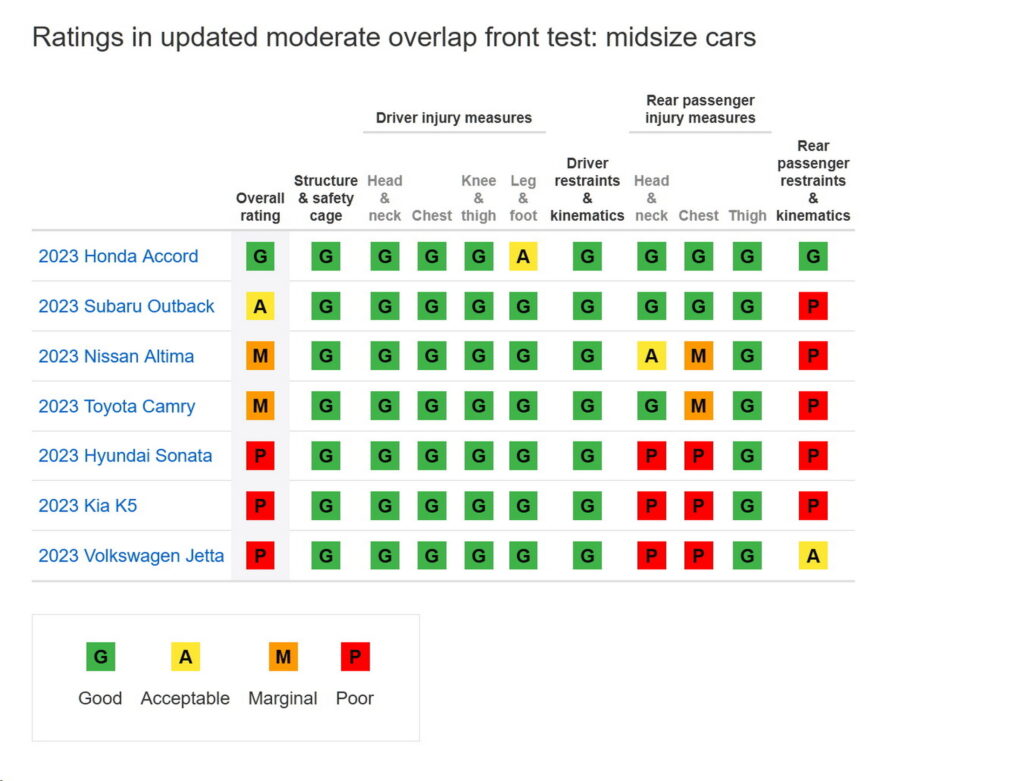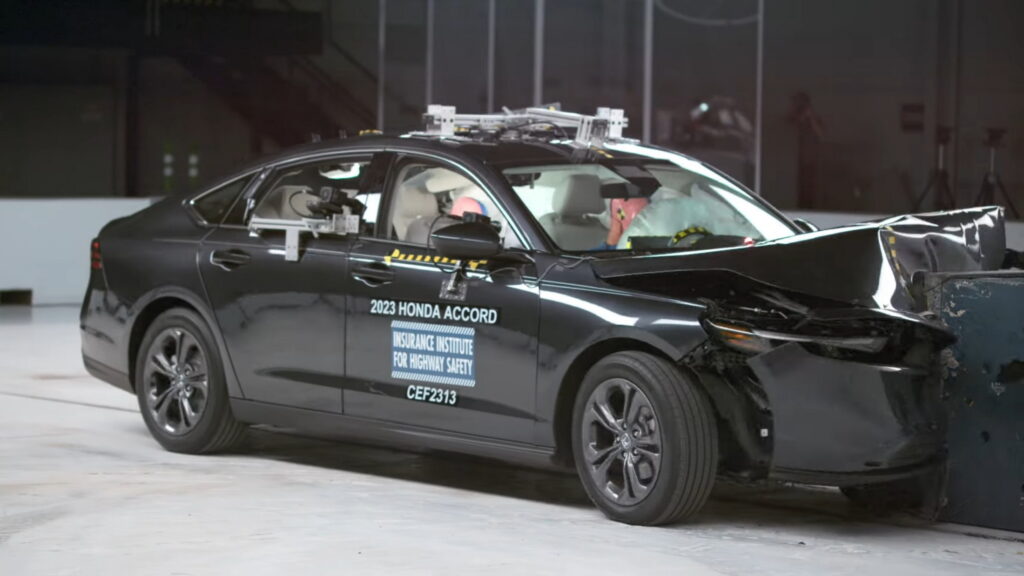The 2023 Honda Accord was the only mid-size car that managed to earn a “Good” rating in the Insurance Institute for Highway Safety’s (IIHS) updated moderate overlap front crash test. Although the seven models tested by the organization protected their front seat occupants well, they struggled to offer the same protection to rear-seat passengers.
As part of the IIHS’s efforts to push automakers to offer safer vehicles, and to better inform consumers, it decided to put a crash test dummy into the back seat of vehicles during crash tests. These tests are revealing the ways in which safety innovations offered to drivers have not been implemented equally across the vehicle.
Indeed, in a study of vehicle safety, the IIHS found that the risk for fatal injuries in new cars is higher in the rear than in the front of a vehicle. It says that’s simply because rear safety has lagged behind front seat technology.
Read: Muscle Cars Pose Deadly Danger To Their Own Drivers And Others, IIHS Data Suggests

Case in point, among the new cars tested by IIHS, the latest Subaru Outback earned an “Acceptable” rating, the Nissan Altima and Toyota Camry earned “Marginal” ratings, and the Hyundai Sonata, Kia K5, and Volkswagen Jetta all earned “Poor” ratings.
“In most of the midsize cars we tested, the rear dummy slid forward, or ‘submarined,’ beneath the lap belt, causing it to ride up from the pelvis onto the abdomen and increasing the risk of internal injuries,” IIHS President David Harkey said. “In the three poor-rated vehicles, measurements taken from the rear dummy also indicated likely injuries to the head or neck as well as to the chest.”
Although these tests are causing problems for automakers, the Honda Accord proves that they are not impossible to pass. The IIHS reports that the sedan performed exceedingly well, and the dummy showed no heightened risk of injuries because the rear restraints did a good job of controlling its motion.
In order to reflect the fact that rear seat occupants are often children, the dummy used in this test is designed to simulate a 12-year-old child. To earn a “Good” rating, there can be no excessive risk of injury to the head, neck, chest, or thigh. The dummy should also remain correctly positioned, without submarining, and it should remain a safe distance from the front seat.




